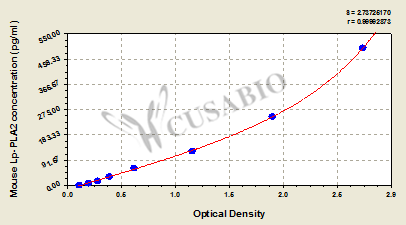The mouse Lp-PLA2 Elisa kit is suitable for the quantitative measurement of mouse Lp-PLA2 in serum, plasma, cell culture supernates, or tissue homogenates. This assay employs the sandwich enzyme immunoassay technique and enzyme-substrate chromogenic reaction. The color develops positively to the amount of mouse Lp-PLA2 in samples. The color development is stopped and the intensity of the color is measured. This kit displays many advantages, including high sensitivity, strong specificity, good linearity, high precision, and recovery, as well as lot-to-lot consistency.
Lp-PLA2, encoded by the PLA2G7 gene, is a calcium-independent enzyme mainly secreted by macrophages and lymphocytes in atherosclerotic plaques. It is responsible for atherosclerotic plaque progression and instability by promoting inflammation. Lp-PLA2 breakdowns phospholipids in oxidized low-density lipoproteins (ox-LDL) into two proinflammatory and proatherogenic products, lysophosphatidylcholines (lysoPCs) and oxidized nonesterified fatty acids (oxNEFAs), which are involved in endothelial dysfunction and plaque inflammation that promote atherosclerosis. Increased Lp-PLA2 levels are strongly related to atherosclerosis-related diseases, including heart disease and ischemic stroke.






